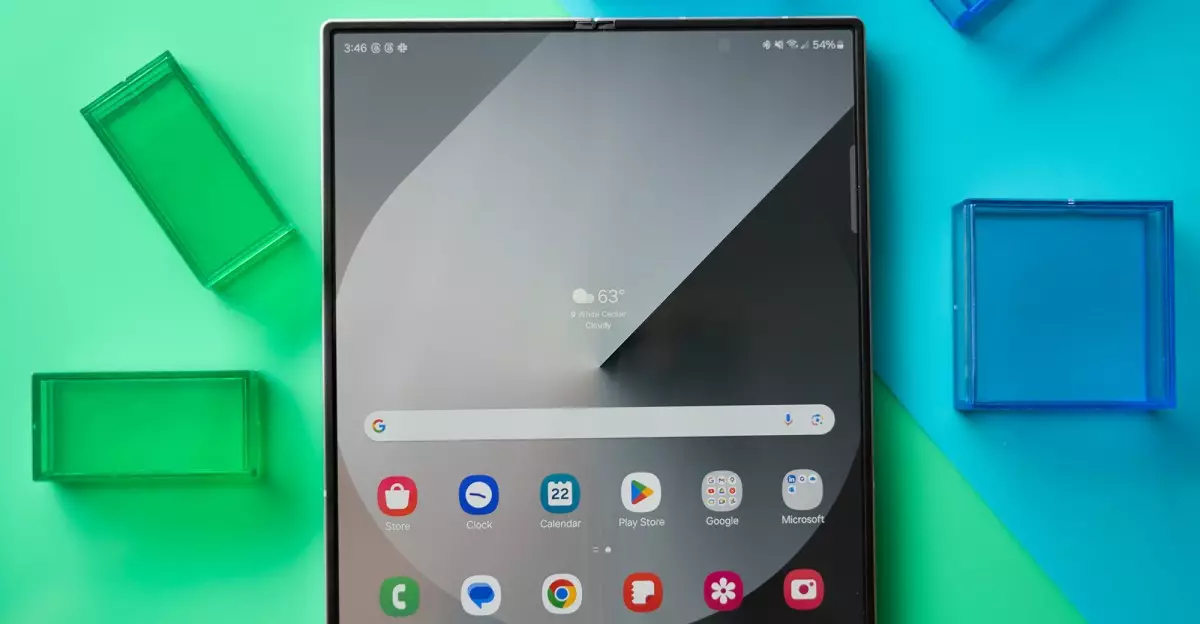For years, Samsung has positioned itself as the pioneer of foldable smartphones, yet the journey to mainstream acceptance remains frustratingly elusive. Despite aggressive marketing campaigns and a continuous stream of new models, foldables account for a mere sliver of the global smartphone market—about 1.5% according to recent estimates. This disparity between innovation and adoption highlights a fundamental challenge: while consumers express curiosity, actual purchase rates tell a different story. Samsung’s repeated efforts, especially with incremental upgrades, hint at a company desperately wanting its foldables to become the new norm. Yet, it’s clear that familiarity with traditional slab phones still significantly outperforms any enthusiasm for the foldable niche, which remains a niche for early adopters and tech enthusiasts rather than mass consumers.
Stagnation or Evolution? A Closer Look at Samsung’s Strategies
Last year’s model updates—like the Galaxy Z Flip 6 and Galaxy Z Fold 6—felt more like minor refreshes rather than revolutionary leaps. Samsung’s approach seemed cautious: slight tweaks here, a few millimeters trimmed there, and some software improvements to marginally improve user experience. This incrementalism reflects the industry-wide hesitation; foldables are complex devices, vulnerable to issues like durability, dust ingress, and repair costs—all hurdles for sustained mass-market appeal. Until recently, Samsung claimed efforts toward IP-rated waterproofing, but a fully dustproof design remains a distant dream. Consumers, rightly or wrongly, view a foldable as an investment not just in features but in durability—a gamble that many are unwilling to take when standard flagships become more affordable and robust.
Yet, Samsung appears prepared to shake things up with its upcoming lineup. Rumors suggest a more refined Ultra variant, promising a sleeker profile and a more compelling feature set. The anticipated inclusion of a larger, razr-style front display on the Z Flip 7, along with potential lower-cost FE models, indicates a strategic push to make foldables more accessible and appealing. By diversifying the lineup and addressing core pain points—price, durability, and practicality—Samsung might just be taking critical steps toward mainstream proliferation. But will these tweaks and new designs be enough to persuade skeptical consumers still hesitant about adopting foldables?
The Challenges That Stand in the Way
Despite the promising changes, fundamental obstacles remain. Durability is a chief concern: foldable screens are inherently more fragile, and repairs often cost a small fortune—deterring routine users from considering such devices as their primary phones. Samsung’s ongoing quest for full dustproofing and waterproofing has yet to reach the coveted IP68 rating on foldables, which significantly hampers confidence in their long-term resilience. Consumers are becoming increasingly wary of investing hundreds—and sometimes thousands—of dollars into a device that could pose costly repair bills down the line.
Additionally, the premium pricing of foldables fuels skepticism. Even with improved designs and features, these devices tend to carry a notable price premium over conventional smartphones. With rising inflation and economic uncertainty, consumers are bottlenecked by affordability concerns. The question then becomes: will a more attractive, possibly cheaper foldable model genuinely overcome these economic barriers? Or will consumers continue to view foldables as luxury items rather than everyday essentials?
An intriguing factor is the looming arrival of Apple’s potential foldable device, possibly arriving as soon as 2026. If Apple ventures into the foldable market, it could act as a catalyst—expanding consumer acceptance and legitimizing foldables as mainstream products. Apple’s brand strength and market influence might push other manufacturers like Samsung to elevate their hardware standards and market strategies, creating a competitive push that could finally turn the foldable tide.
Is Innovation Enough to Move the Needle?
While Samsung’s plans for new models—Ultra variants with thinner profiles and larger front screens—signal an intent to innovate, it remains questionable whether these are game-changers or just polished versions of existing concepts. Market success hinges not solely on hardware improvements but on altering consumer perceptions and reducing entry barriers. Consumers need compelling reasons beyond gimmicks or minor upgrades to change their buying habits.
To truly revolutionize the foldable market, Samsung—and other players—must tackle the core issues: durability, affordability, and user experience. That might mean investing in superior materials, engineering more robust hinge mechanisms, and delivering a more seamless, dustproof design that can withstand everyday use. Without addressing these fundamental flaws, foldables risk remaining a niche, an exotic gadget appealing mostly to early adopters rather than the broader populace.
Moreover, the industry’s hesitation underscores a deeper truth: innovation alone isn’t enough if the ecosystem—app developers, accessory manufacturers, and carriers—doesn’t support the form factor. Samsung’s success depends on fostering a vibrant ecosystem that makes foldables as practical and reliable as traditional smartphones. Only then can foldables shed their perception as fragile novelties and become trustworthy daily drivers for the masses.
Samsung’s latest ambitions and rumored plans represent a critical test for foldable smartphones. While incremental hardware improvements and diversified models lay the groundwork, the real breakthrough depends on overcoming durability concerns and making foldables a financially viable choice for a broader audience. The anticipated arrival of Apple’s foldable device might serve as a much-needed catalyst, ushering in a new level of consumer confidence and industry innovation.
Ultimately, Samsung stands at a crossroads. The foldable revolution will not happen simply because of better screens or slimmer profiles; it requires a paradigm shift in how consumers perceive durability, value, and everyday practicality. Whether Samsung can lead this charge remains to be seen—yet one thing is clear: the potential for foldables to reshape our smartphones is undeniable. The question is whether they will finally leap from niche curiosity to mainstream staple, or remain an aspirational high-tech gadget for a select few.


Leave a Reply